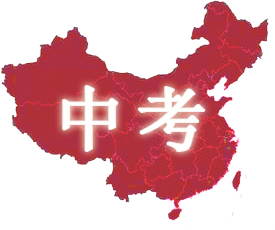

农历五月初五,俗称端午节,端是开端、初的意思。初五可以称为端五。农历以地支纪月,正月建寅,二月为卯,顺次至五月为午,因此称五月为午月,五与午通,五又为阳数,故端午又名端五、重五、端阳、中天、重午、午日,此外一些地方又将端午节称之为五月节、艾节、夏节。从史籍上看,端午二字最早见于晋人周处《风土记》:仲夏端午,烹鹜角黍。端午节是我国汉族人民的传统节日。这一天必不可少的活动逐渐演变为:吃粽子,赛龙舟,挂菖蒲、艾叶,薰苍术、白芷,喝雄黄酒。据说,吃粽子和赛龙舟,是为了纪念屈原,所以解放后曾把端午节定名为诗人节,以纪念屈原。至于挂菖蒲、艾叶,薰苍术、白芷,喝雄黄酒,则据说是为了压邪。
时至今日,端午节仍是中国人民中一个十分盛行的隆重节日。端午节现为国家法定节假日。假期为一天。国家非常重视非物质文化遗产的保护,2006年5月20日,该民俗经国务院批准列入第一批国家级非物质文化遗产名录。
农历五月初五是我们传统的节日期端午节。
相传,古代有一位爱国诗人屈原,因为反抗坏人的残酷迫害,于五月初五那天投江自杀了。百姓们便组织小船到江中寻找屈原的尸体,同时,为了不让诗人被鱼虾吃掉,就把粽子投到江里喂鱼虾,好让鱼虾吃饱不去吃诗人。后来,人们为了纪念他便把五月初五这天叫做端午节。
又因为五月初五有两个五,所以民间有许多跟五这个数字联系在一起的。人们用蓝、白、黄、黑、红五种线系在儿童的手腕和脚上,称长命缕。小孩子系上这种线会给他们带来好运。
在端午节这天,家家户户的门上插菖蒲、艾草等东西,让这些东西给人们带来平安;在这一天,大人们为我们准备了水,在水里放了些艾草,给我们淋浴,希望我们一年不生病。
每逢端午节,人们把屋子打扫得干干净净的,洒下艾草水,把毒虫杀死。
我的介绍,你喜欢听吗?
农历五月初五为端午节,端午节的第一个意义就是纪念历史上伟大的民族诗人屈原。端午节是我国二千多年的旧习俗,每到这一天,家家户户都悬钟馗像,挂艾叶菖蒲,赛龙舟,吃粽子,饮雄黄酒,游百病,佩香囊,备牲醴。
Do you know who is Qu Yuan? What type of Zongzi do you like most? Have you ever joined a dragon boat competition? All these are related to the Dragon Boat Festival.
Do you know the origin of this festival? Read the following essay and you will have a clear picture of the Dragon Boat Festival.
The 5th day of the 5th month of the lunar year is an important day for the Chinese people. The day is called Duan Wu Festival, or Dragon Boat Festival, celebrated everywhere in China.
This festival dates back to about 2,000 years ago with a number of legends explaining its origin. The best-known story centers on a great patriotic poet named Qu Yuan.
The customs vary a lot in different areas of the country, but most of the families would hang the picture of Zhong Kui (a ghost that can exorcise), calamus and moxa in their houses. People have Dragon Boat Races, eat Zong Zi (dumpling made of glutinous rice wrapped in bamboo or reed leaves) and carry a spice bag around with them.
